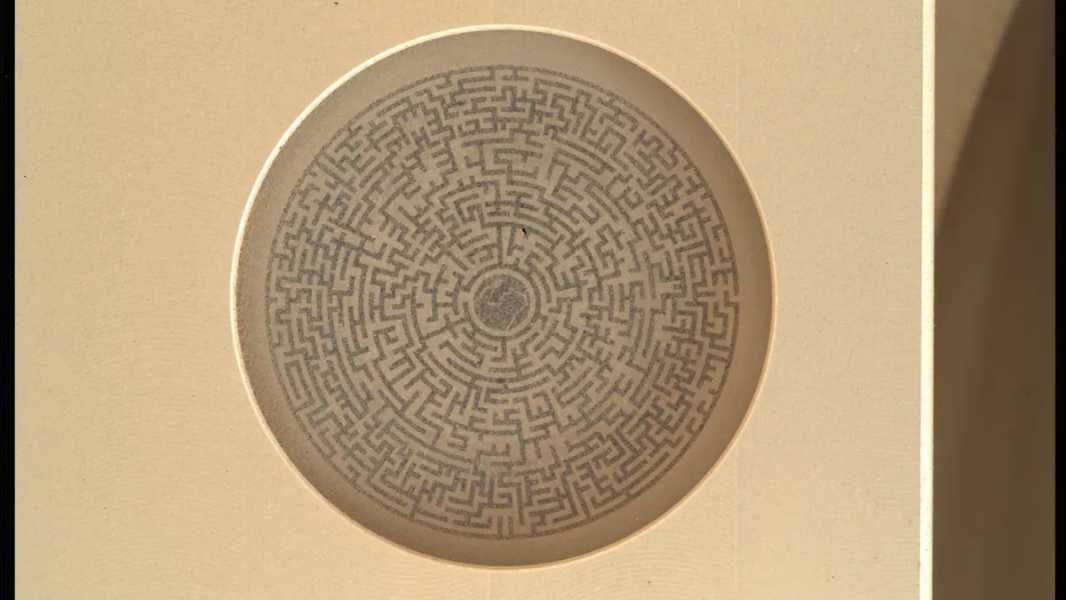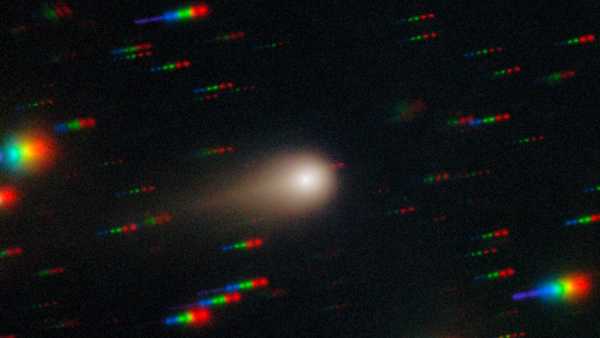
(Image credit: NASA/JPL-Caltech)
If you've ever scrolled through the carousel of raw images from NASA's Perseverance rover, you might have noticed a strange object: a miniature, complex maze etched into a small plate that was photographed multiple times.
Why is the Perseverance rover so fascinated by this tiny maze? It turns out that this maze is a calibration target — one of ten for Perseverance’s instrument called Scanning Habitable Environments with Raman & Luminescence for Organics and Chemicals, or SHERLOC for short.
This Sherlock Holmes-inspired tool is designed to identify organic compounds and other minerals on Mars that may indicate ancient microbial life. To conduct such studies with precision, the system must be carefully calibrated, which is where the Labyrinth comes in.
You may like
- Perseverance Rover Heads to Crocodile Plateau on Mars in Search of Super-Ancient Rocks
- NASA's Mars Rover Has Discovered Hundreds of 'Spider Eggs' on Mars — and Scientists Have No Idea How They Got There
- NASA's Mars satellite has discovered marks on the surface of Mars that look like blobs of paint running down a wall.
Mounted on the rover’s seven-foot (2.1-meter) robotic arm, SHERLOC uses spectroscopic techniques — specifically Raman and fluorescence spectroscopy — to analyze Martian rock samples. To ensure accurate measurements, it must continually calibrate its instruments using a set of reference materials with precisely defined characteristics. These materials are placed on a plate attached to the rover’s front body: the SHERLOC calibration target.
“The calibration targets serve a variety of purposes, the main ones being refining the SHERLOC wavelength calibration, calibrating the SHERLOC laser scanner mirror, and monitoring the laser focus and health,” Kyle Uckert, SHERLOC deputy principal investigator at NASA's Jet Propulsion Laboratory, told Space.com.
The target consists of two rows, each filled with small areas of carefully selected materials.
The top row includes three key calibration materials: aluminum gallium nitride (AlGaN) on sapphire disks; the UV-scattering material Diffusil; and the Martian meteorite SaU008, whose mineral composition is already known and helps match the wavelength calibration to the actual geology of Mars.
Sourse: www.livescience.com





